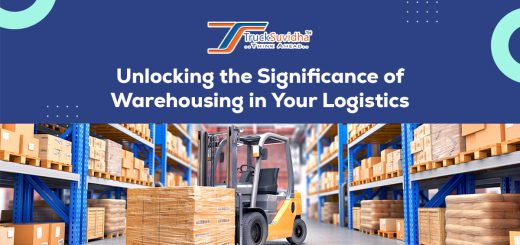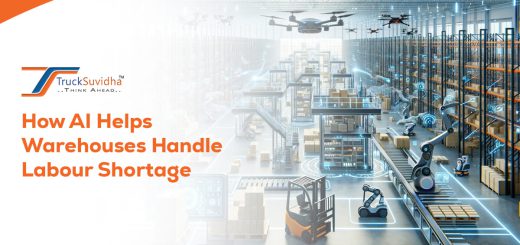An Ideal Warehousing Automation Strategy for Retailers
In today’s highly competitive retail environment Warehouses have become the backbone of any successful business. Customers now expect lightning-fast delivery and impeccable order accuracy. This puts enormous pressure on retailers. As a result, traditional warehousing automation methods are insufficient to meet these demands.
Additionally, the rise of online shopping has dramatically changed consumer expectations. Shoppers want their products delivered quickly. Sometimes within hours or days of ordering. Additionally, they expect each item to be exactly as ordered without any errors or damages.
To meet these challenges advanced technology is being adopted by retailers. Surprisingly, these smart solutions make those warehouses operate more efficiently. Minimize the aspect of human intervention. Warehousing automation is getting popular and increases the cycle time of the overall order processing. It also aids a business in managing large orders efficiently with improved accuracy and speed. Lastly, a warehouse has more than mere functional importance of storing the products. They have evolved into major tactical brands that determine the success or failure of a given retailer in the contemporary dynamic world.
Why is Warehouse Automation Important?
In today’s rapidly evolving retail era, Warehouse Automation is like a superhero for businesses. It also transforms traditional warehouses into incredibly smart and efficient spaces. Automation is the secret weapon that helps retailers compete and meet customer expectations. First of all, warehousing automation will greatly speed up the speed of the product. Economically, automation is a game changer. It also helps retailers save big money by:
– Reducing labor costs
– Minimizing packaging waste
– Preventing costly mistakes
– Optimizing storage space
Operational efficiency reaches new heights with warehousing automation. Consequently, warehouses can process more orders with incredible precision. On the other hand, the workers can exploit their time to produce ideas that contain more value rather than engaging their energy in mechanical operations.
Finally, automation results in satisfying customers. Thus, faster deliveries and accurate orders with the right management processes make it possible for customers to receive products at the right time. Further, this creates precedence of trust and loyalty.
Finally, warehousing automation is not a technology phenomenon, but a future state of affairs. However, it is a survival mechanism for organizations that wish to succeed in the current aggressive retail environment.
Understanding Your Warehousing Automation Needs
Firstly, before investing in warehousing automation, retailers or any other company dealing in products must become Warehouse detectives. This strategic approach ensures that automation investments directly address real operational challenges.
Critical Questions to Ask:
- Time Loss Investigation:- Where do processes slow down? What activities consume the most working hours? Are there bottlenecks preventing smooth operations?
- Task Efficiency Evaluation:- Which tasks take unnecessarily long? Can certain processes be streamlined? What repetitive activities drain productivity?
- Error Identification:- Where do most mistakes typically occur? Which processes have high error rates? What causes these frequent mistakes?
Common Problem Areas to Examine:
- Inventory Management:- Slow stock tracking, Inaccurate inventory counts, Difficulty locating products.
- Order Processing Challenges:- Complex picking procedures, Slow order fulfillment, Manual data entry errors.
- Packaging Inefficiencies:- Inconsistent packaging methods, Time-consuming packaging processes, and High material waste.
- Transportation Bottlenecks:- Inefficient route planning, Delayed shipments, Poor load optimization
Key Insights:
Consequently, a thorough self-assessment helps retailers:
- Pinpoint exact improvement areas
- Understand specific automation needs
- Develop targeted technological solutions
Read More:- Ultimate Guide to Essential Tools for Truck Drivers on the Road
Choosing the Right Automation Technologies
Now comes the exciting part! Many cool technologies can transform a warehouse:
- Automated Storage and Retrieval Systems (AS/RS):- Imagine robots that automatically store and find products. Different types include Horizontal carousels, Vertical lift modules, and Robotic storage systems.
- Conveyor Systems:- Think of these as magic moving walkways for products. However, they move goods around the warehouse quickly. Different types include Roller conveyors, Belt conveyors, and Sorting systems.
- Automated Guided Vehicles (AGVs):- These are like smart robots that move around the warehouse. Also, they can transport products, navigate without human help, and work safely around people.
- Robotic Systems:- Robots that can Pick products, Pack boxes, and Sort items, while working alongside human workers.
- Warehouse Management System (WMS):- Specialized computer software that tracks inventory in real-time. Also. streamline order processing and help everything work more efficiently.
- Automated Picking Systems:- Technology that automatically selects products, such as optical picking. Picking using sound and a robotic picking system.
- Automated Packaging Systems:- Machines that make boxes pack packaging Seal and label the product.
Making Sure Everything Works Together
Retailers need to check if new technologies can connect with their existing systems. Furthermore, this means ensuring compatibility with current warehousing automation software, smooth data sharing, and real-time communication between different systems.
Understanding the Investment
Before investing, retailers should Calculate potential cost savings, Estimate efficiency improvements, and Consider long-term benefits. What to Consider: Reduced labor costs,
- Increased productivity
- Better accuracy
- Lower inventory holding expenses
- Improved customer satisfaction.
Training and Supporting Workers
Automation doesn’t mean replacing people. Instead, it’s about helping workers learn new skills, Creating training programs, and Supporting employee growth.
Maintenance and Support
Choosing warehouse automation also means ensuring technology reliability, Having spare parts available, Getting technical support, and Creating maintenance plans.
Staying Flexible
The best automation strategies can adapt to changes, welcome new technologies, and adjust to market trends.
Conclusion:
Automation is like giving your warehouse a superpower. Meanwhile, it helps retailers Work faster, Save money, Make customers happier, and Stay competitive.
Understand your warehouse needs
Choose the right technologies
Invest wisely
Support your workers
Stay flexible and open to change
Warehousing automation isn’t about replacing people. However, it is about working smarter, not harder. By using these technologies Retailers will be able to create warehouses that are efficient, responsive, and future-ready.




Recent Comments